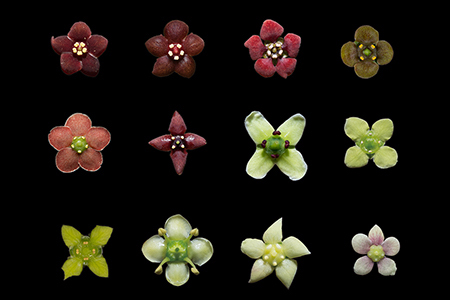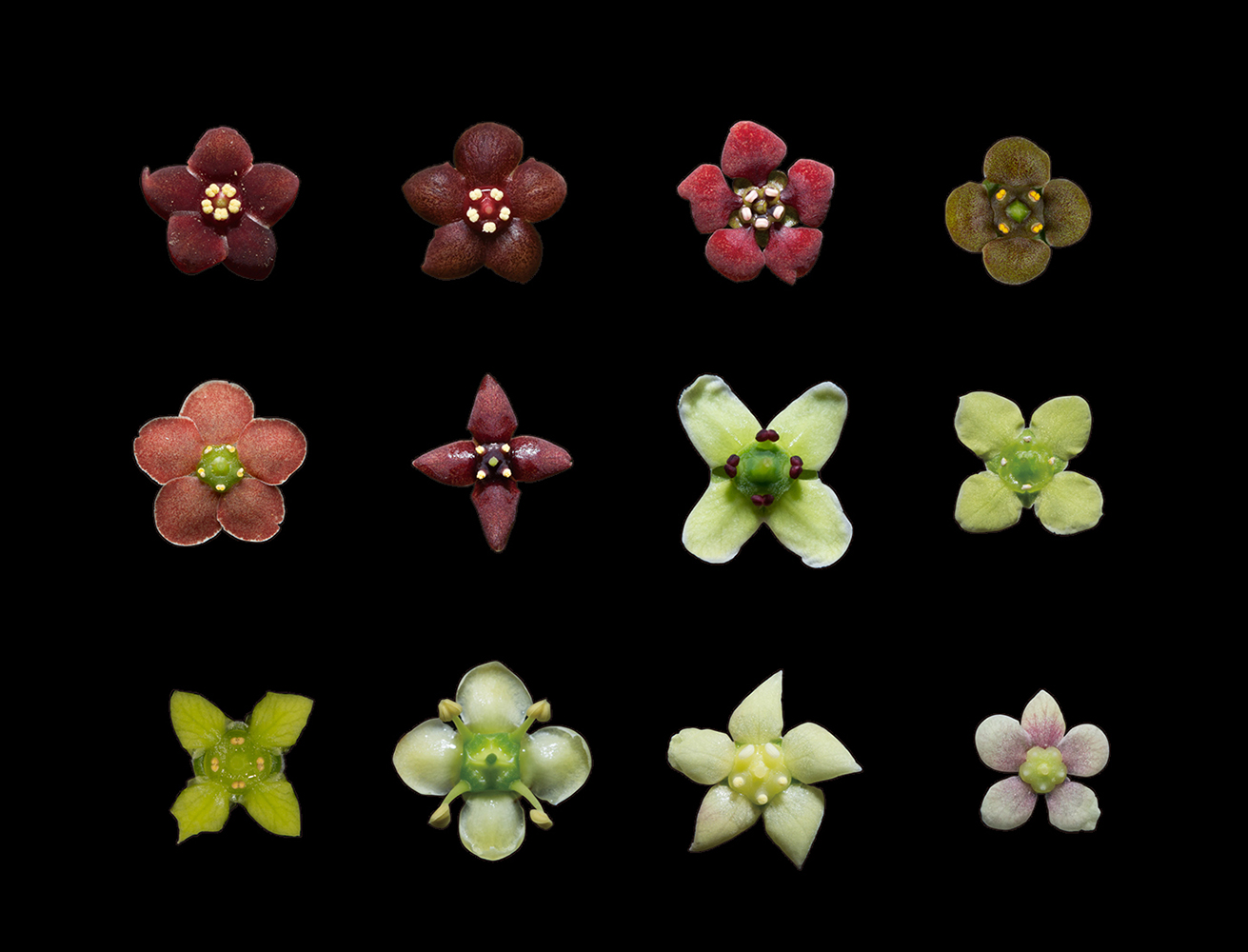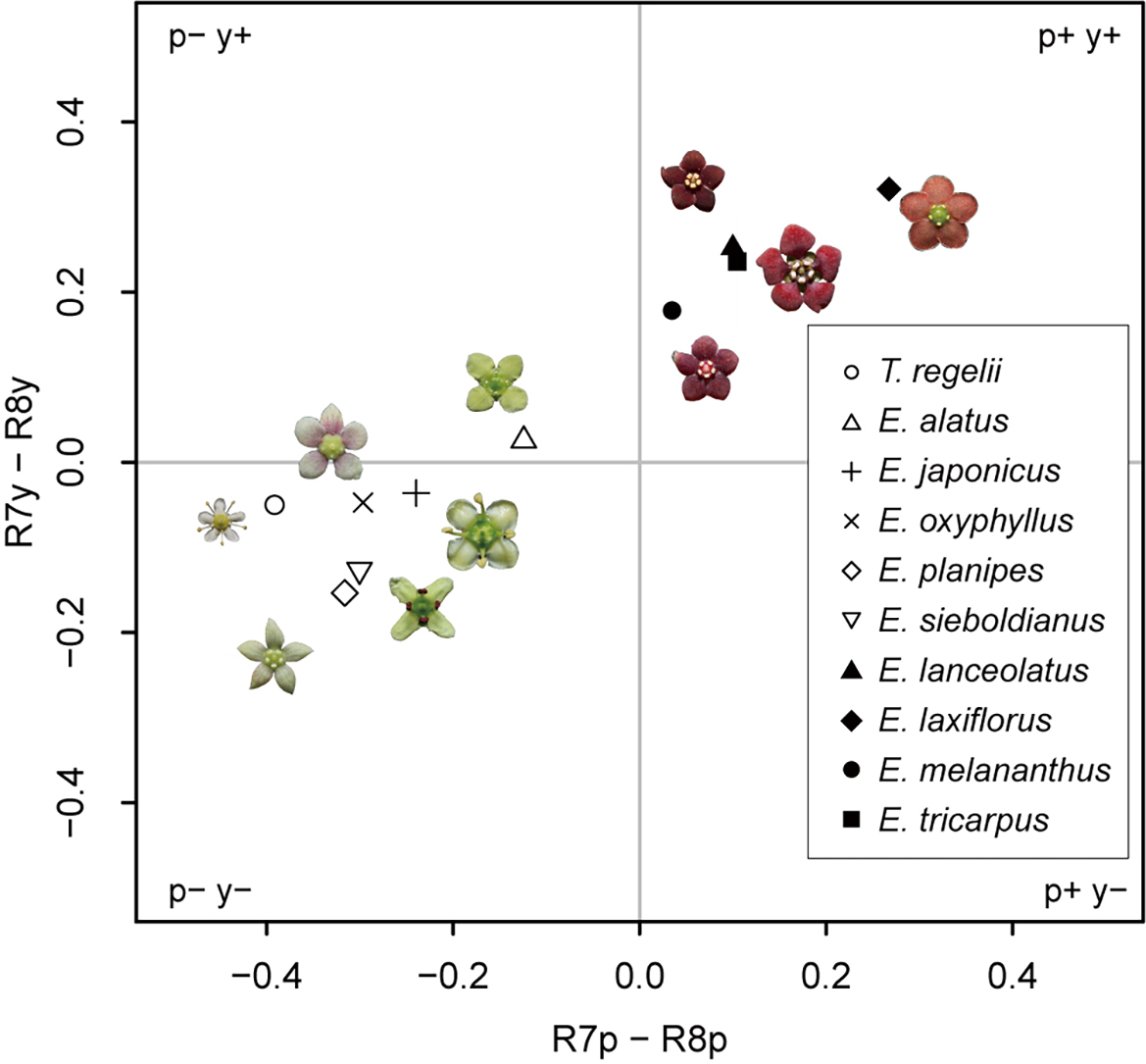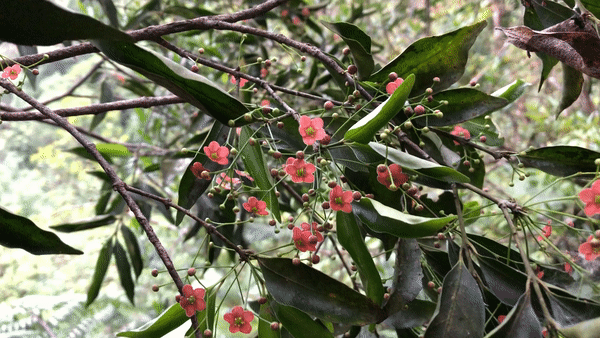Fungus gnats as pollinators not pests Dipteran insect identified as having a key role in driving floral diversity of Euonymus plant Research news


A beautiful array of flowers. Euonymus are found in North America and Southeast Asia, both in gardens and in the wild. This genus of flowering plants includes small shrubs, trees and creepers, and although many are toxic, some have been used for traditional medicine and the wood has been turned into tools, such as spindles, knitting needles and artist’s charcoal. © 2023 K. Mochizuki
Many plants and crops rely on insects to pollinate them so they can reproduce. A new study has shown that several flowering plants from the group Euonymus are pollinated by fungus gnats, a dipteran insect. Specifically, they pollinate Euonymus plants which have red-petaled flowers with short stamens and yogurt-like scent. Although fungus gnats are known to pollinate hundreds of plant species, this study shows that the particular traits of red Euonymus flowers were likely to have been acquired via pollination syndrome, evolving over a process of natural selection to be pollinated specifically by fungus gnats. This research highlights the important role of Diptera, which are commonly regarded as pests, in plant diversity and evolution.
Summer is in full swing, and while the buzz of a few honeybees in the garden might be welcome, the nightly whine of a lone mosquito probably isn’t. But did you know that mosquitoes are part of group of vital pollinators? This group, called Diptera, includes other common insects like flies, midges and gnats. Although often seen as pests, many plants are actually specifically pollinated by them. This means that certain flower characteristics, such as the color, odor, shape and stamen length, have adapted to attract these insects. These adaptations are known as pollination syndromes. Without these insects, we might not have the variety of flowers, fruits, herbs and vegetables we enjoy today.

Color chart. This chart estimates how fungus gnats perceive flower color, based on the available housefly color vision model. Flowers in the same quadrant are recognized as being the same color, while those in other quadrants are seen as different colors. © 2023 K. Mochizuki
Results of a new international study have shown that the red flowering plants of Euonymus — a genus of about 130 species found worldwide — have evolved to be pollinated by a small fly called the fungus gnat. “Although they are important pollinators, the exact relationship of Diptera to pollination syndrome was largely unknown. In this study, we showed that unique traits in Euonymus flowers are highly likely driven by fungus gnats, which in turn indicates that fungus gnats mediate the evolution of new and unique flowers,” explained Assistant Professor Ko Mochizuki, lead author from the Botanical Gardens at the University of Tokyo. “The flowers of fungus gnat-pollinated plants are distinct when compared to other pollination systems. So, fungus gnats are important because they contribute to floral diversification.”
In this study, the team tested five species of Euonymus which have red or dark-red flowers, and six species which have light-white, greenish-white and greenish-yellow flowers. The team surveyed which insects visited the flowers of each plant in their natural habitats in Japan, Taiwan and the U.S. over a period of seven years between 2015 and 2022, and also analyzed the pollen on captured insects in the lab. They observed that fungus gnats would predominantly visit red flowers and only a few would go to the white flowers, which were more actively visited by bees, hoverflies and beetles.

Euonymus laxiflorus in Taiwan. The team recorded 1,853 flower-visiting insects over a period of 250 hours during the several years of study. Here a swarm of fungus gnats visits the red flowers of the Euonymus laxiflorus. Fungus gnats are known to pollinate 12 plant families containing hundreds of species. © 2023 K. Mochizuki
Although fungus gnats favored the red flowers, flies have limited color vision and cannot see red. So the team tested how the flowers might appear to them by measuring the reflectance of light off the petals and analyzing the data using an existing vision model for houseflies. Although we can’t know exactly how the colors look in their eyes, the team could confirm that the darker petals would look different to lighter petals. The researchers also pinpointed the scents of the flowers, using gas chromatography coupled with mass spectrometry. While the white flowers had a more grassy, peppery odor (from the chemicals pinene and caryophyllene) the red flowers had more of a yogurt-like scent (from acetoin). These two traits, red flowers with a yogurt scent, appeared to be pollination syndromes which had evolved to appeal to the fungus gnats or deter other insects.
“Before this study, I was not confident that red-flowering euonymus from outside of Japan were pollinated by fungus gnats, as until then I had only observed this behavior within Japan. When I observed a fierce visitation of fungus gnats to a Euonymus laxiflorus bush in Taiwan, I exclaimed ‘pollination syndrome exists!’ The exact role of the dark-red floral display and acetoin emission remains unclear, so as a next step I need to clarify whether they attract fungus gnats or refute other visitors,” said Mochizuki. “I believe that our study contributes to understanding the complex interactions between plants and insects in nature. Particularly, it shows the importance of Diptera as a driver of floral evolution, which I hope may change the public notion to see Diptera not as pests but as useful visitors.”
Papers
Ko Mochizuki, Tomoko Okamoto, Kai-Hsiu Chen, Chun-Neng Wang, Matthew Evans, Andrea T. Kramer, Atsushi Kawakita, "Adaptation to pollination by fungus gnats underlies the evolution of pollination syndrome in the genus Euonymus," Annals of Botany: August 23, 2023, doi:10.1093/aob/mcad081.
Link (Publication )
)





